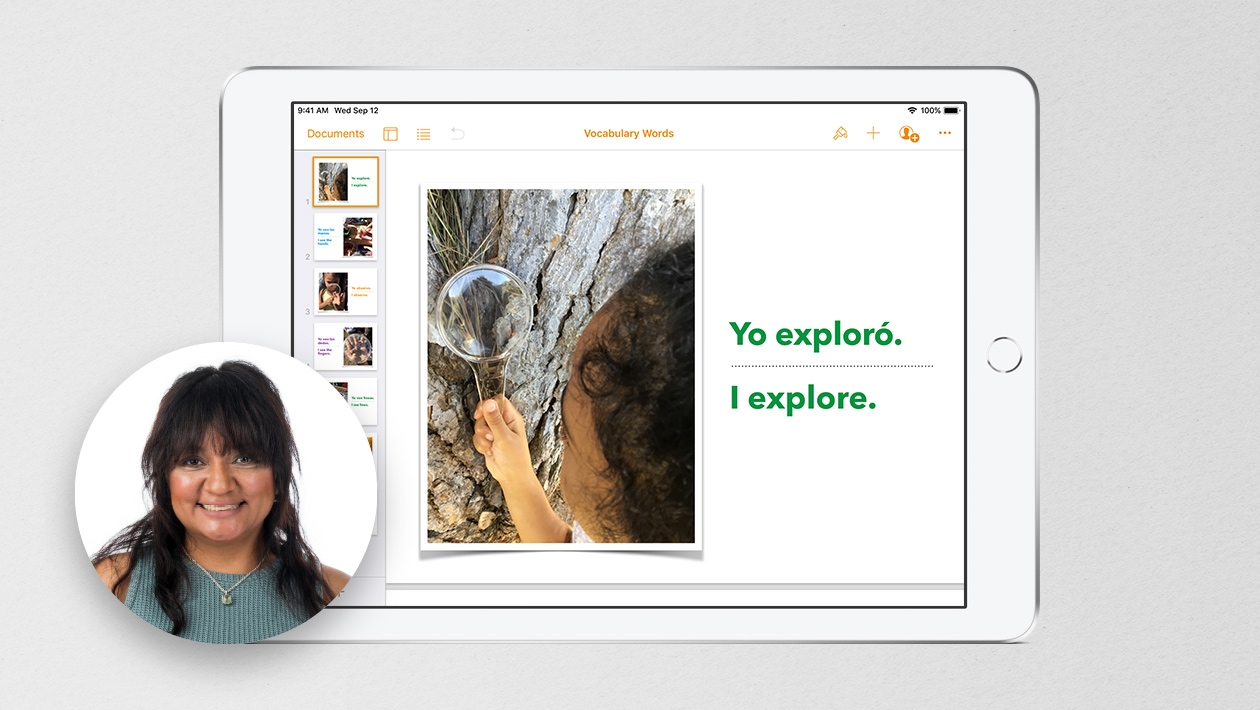Can the simple act of capturing and organizing images deepen student learning?
Photos have power. They help us remember, celebrate, and reflect on our experiences. Photos can be powerful in the classroom, too. They enable students to look back on their learning, set goals, identify their successes and challenges, and explain their learning to others. Though the tools are simple, the impact is profound.
As the teacher, you can create structures to use Camera and Photos throughout the learning day and unlock new metacognitive pathways for students of any age. When kids have those images in their “back pocket”, they will see growth, connections, and learning as never before!
What do students capture?
As the teacher, you know of many experiences that are pivotal in the curriculum and in your students’ learning lives. Those are a great starting point! Ideally, though, students will take ownership over this process. They will have their own perspectives about how to document their learning story. What are their moments of struggle and celebration? What books and resources are meaningful for them? Where in their learning did they find discovery and joy? What are they working hard on? What are they proud of? When they've made a breakthrough, how do they know?
Engage your students, as a group and individually, in ongoing conversation about what to take pictures of. Generally, photos will fall into one of three categories:
- Moments - Things that happen - Lessons, experiences, investigations, work sessions, collaborations, field trips, and more!
- Artifacts - Things students create - Projects, documents, models, notes, sketches, and so on.
- Resources - Things students use - Books, maps, anchor charts, example problems or projectss, digital tools.
Notes:
- One of my favorite starting points is for students to capture every book they read throughout the year. Seeing those book covers all in one place is a powerful reminder, as well as a catalyst for reflection and celebration! There’s something compelling about a visual reading record, as opposed to a list or reading log.
- When in doubt, it’s better to capture the photo and then delete it during a curation session.
Establishing your Classroom Camera Culture
Creating a safe environment with the camera is critical. Students need to be able to focus on their own learning without worrying that a peer is snapping photos of them. As your students' camera culture emerges, you may want to start with a narrow scope for photos (e.g. only take photos of items on your desk), and then gradually expand as students demonstrate ownership and responsibility. Engage students in a discussion about the norms for camera use. Here are the ones my students and I generated last year:
- Take photos only for learning.
- Remain focused on your own work when others are taking photos.
- Respect personal space; keep the camera a friendly distance from classmates.
- Notice who is in your photo and ask yourself if you would be comfortable if someone had that photo of you.
- Ask consent before capturing or keeping a photo featuring a classmate.
Organizing Photos
Make it a classroom routine every week to organize photos into albums. It will quickly become second nature. This is a great time for students to delete unwanted images, too. Start with one album per subject, and consider having a Books I've Read album, too. These are tangible categories that will be accessible to the students as they learn this new routine. Over time, you will want students to generate their own albums (categories), and to include some metacognitive albums as well (challenges, discoveries, etc). You will learn a great deal about your students by the varied ways in which they group their photos -- and they'll learn a lot about themselves, too!
Student Reflection
Provide regular time for students to look through their photos -- individually, with a partner, and with you. There are many reflection and support structures you can draw upon, or you can let the students take the lead! Students can create a Memory in Photos, narrate photos in Keynote, create a learning documentary in iMovie and Clips, or embed images in a journal in Pages. The possibilities are endless. What's essential is that students have the time, autonomy, and audience to explore their photos, make meaning of their learning journey, and set goals for the future. Time invested in metacognition and reflection will deepen student engagement, investment, learning, and sense of self efficacy. It will also give students the chance to revisit joyful moments and look ahead to future learning!
Here are some resources to help you get started with photo albums:
How to organize your albums using folders on your iPhone | Apple Support
How to create your own Memory in Photos on iPhone or iPad | Apple Support












July 19, 2024 . English
English
As someone who struggles keeping everything digital organized from my photos to my online drives, I love this idea to start getting students to think about organizing their digital assets from such a young age! I also think it is a great idea to have students reflect on an ongoing basis as well. That is so important, and we don't spend enough time on that. What a wonderful idea!
This action is unavailable while under moderation.
This action is unavailable while under moderation.